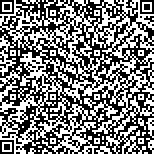| 摘要: |
| 黄河三角洲湿地地物类型在光谱曲线上差异较小,且在空间上分布零散,呈破碎化特性。现有的分类方法受限于局部感受野难以捕捉到图像的长距离依赖关系,导致在黄河三角洲湿地高光谱影像中分类精度不理想,针对此问题,本文提出了一种光谱-空间联合Transformer模型。光谱和空间支路分别以光谱向量和空间邻域为输入,基于自注意力机制提取全局光谱和空间特征,在两个支路引入多阶特征交互层,实现浅层边缘信息和深层语义信息的融合,最后采用自适应相加的方式将两路特征融合,送入分类器实现最终分类。本文在黄河三角洲湿地高分五号GF-5和CHRIS两幅高光谱影像上验证方法的有效性,实验结果表明,该方法显著提高了湿地分类的精度,在选用3%的样本训练条件下总体精度分别达到了90.90%和94.17%,优于其他分类方法。研究结果可实现黄河三角洲湿地地物类型的高精度分类,为湿地的保护提供技术支持。 |
| 关键词: 黄河三角洲湿地 高光谱影像分类 Transformer模型 光谱-空间联合 |
| DOI:10.11759/hykx20220429012 |
| 分类号: |
| 基金项目:山东省联合基金资助项目(U1906217);国家自然科学基金资助项目(62071491) |
|
| Hyperspectral image classification of Yellow River Delta wetlands based on a spectral-spatial unified transformer model |
|
XIN Zi-qi1, LI Zhong-wei1, WANG Lei-quan2, XU Ming-ming1, HU Ya-bin3, LIANG Jian4
|
|
1.College of Marine and Spatial Information, China University of Petroleum(East China), Qingdao 266580, China;2.College of Computer Science and Technology, China University of Petroleum(East China), Qingdao 266580, China;3.First Institute of Oceanography, Ministry of Natural Resources, Qingdao 266061, China;4.Nantong Intelligent Perception Research Institute, Nantong 226007, China
|
| Abstract: |
| Slight difference is noted in the spectral curve of land cover types in the Yellow River Delta, and the spatial distribution of land cover types is scattered and fragmented. Existing classification methods are limited by the local receptive field; thus, it is difficult to capture long-distance dependence of images, resulting in unsatisfactory classification accuracy in hyperspectral images of the Yellow River Delta wetland. To address this problem, this paper proposes a spectral–spatial joint transformer model. The spectral and spatial branches took the spectral vector and the spatial neighborhood as inputs, respectively, extracting global spectral and spatial features based on the self-attention mechanism. This paper also introduces a multilevel feature interaction layer in the two branches to realize the fusion of shallow edge information and deep semantic information. Finally, the two-way features were fused by adaptive addition and sent to the classifier for final classification. The effectiveness of the method was verified on two hyperspectral images of the Yellow River Delta wetland, namely, Gaofen-5 and CHRIS. The experimental results revealed that the method significantly improved the accuracy of wetland classification. The overall accuracy reaches 90.90% and 94.17% for the two images when using 3% of the samples for training, outperforming other classification methods. The research results can realize the high-precision classification of the land cover types in the Yellow River Delta and provide technical support for wetland protection. |
| Key words: Yellow River Delta wetland hyperspectral image classification Transformer model spectral-spatial joint |
